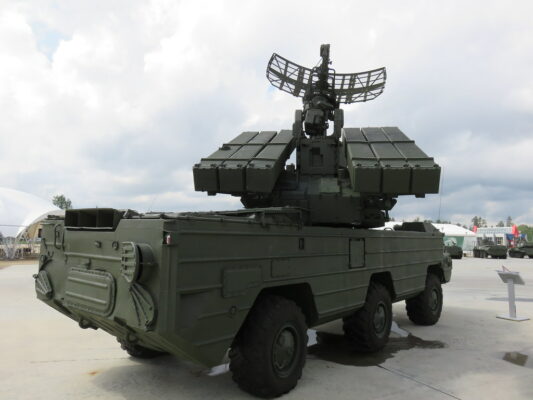
Ukraine may need to use older missile defence systems with the dwindling stock of more advanced surface to air missiles.
A modern development of war that many were likely not aware of over the last decade was the ability for missiles to shoot down other offensive munitions like missiles and artillery shells. While it is still very difficult to shoot down targets that are small and fast moving, very high, or very low, if an acquisition radar can see a target, many advanced missiles have a high probability of shooting it down. The stealth solution can provide a level of protection, but at great cost and limited capability depending on the system being used. Even in the case of stealth, newer and more powerful radars are now able to see many stealth aircraft, but are unable to fire on the target for the time being. With modern missiles being such a great threat, it is often better to avoid using many air assets in a war zone, or use non-expensive and disposable equipment like cheaper drones en masse to overwhelm a small anti-air unit. In Ukraine, the conflict might change rapidly as it may be the case that Ukraine and its allies are running out of many of the advanced missile systems keeping the country protected from Russian missile and artillery threats.
In the video in the link here, the analyst discusses the probable lack of proper advanced air defence missiles possessed by Ukraine, and the limited numbers of international stock of other types of advanced missiles needed to keep up the current level of protection over Ukraine. The tactic of using low cost drones to terrorise Ukraine’s population by Russia, pressured Ukraine to use much of their modern missile stock against many low cost drones over the last few months. While the use of lower cost anti-air artillery like Gepards, Oerlikons and Shilkas might have been less effective, the upgrading of those systems should have been considered early on as an essential project to knock down drones as advanced missiles are limited in number, costly, and take time to produce in quantity. Another essential tactic to eliminate the threats of terror weapons on Ukrainians would have been to target the source of such equipment, especially if it is outside of Russia. Considering those weapons were designed to be used specifically against civilians, it would be considered an appropriate target under International Law.
With the recent decision to finally move allied MiG-29s into Ukraine from their neighbours, Ukraine will soon depend more on air-to-air assets for defence. This sudden change in policy is likely due to the low stock of Air Defence missiles possessed by Ukraine and its allies. Ukraine will soon be depending on fighter jets to manage the tracking and guidance of their own missiles on targets. Another reason for the increase in air assets to Ukraine is that with a diminished Air Defence shield, Russian Air Force planes are now less likely to be shot down by advanced anti-air systems from the ground. The mostly absent Russian air arm has been fairly passive in its approach since the beginning of the war, and it could be the case that the months of drone attacks to waste advanced Ukrainian missiles was planned so that the spring offensive could be supported in a more robust manner by Russian Air force artillery. Even with advanced tanks coming from NATO, air assets could cause a lot of problems for Western tanks on the field in Ukraine. Severe losses of NATO equipment may not change the position of the front lines in the war, but it would diminish the perception of power Western countries have over Russian forces in Ukraine. Whatever the outcome, the upcoming spring offensive will alter the narrative of the war when fighting intensifies on the fields of Ukraine.